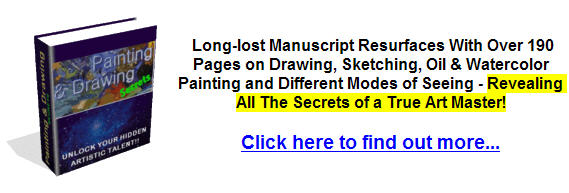Learn Still Life Painting - Apple
When you look at a conventional still life painting, you see a picture. When you create a still life painting, you need to see the shapes, colors, shadows and highlights in the subject that you are portraying. This article will use the example of an apple, a great subject for beginners to paint when learning to use shapes and shadows as tools in painting. First, apply a base coat of paint to your canvas. The color that you choose is really up to you, but if you want a striking, glowing painting, you should choose a color complimentary to the color of the apple you wish to paint. (e.g. if you choose a red apple, do a green coat of paint, and vice-versa) If you wish to have a more natural, muted tone to your painting, then you could go for a pale grey, or a tint of the color of your apple. Allow the coat of paint to dry for a very long time, even up to a week, if you can be that patient. There’s nothing wrong with using acrylic paint to do your base coat, as acrylic dries much faster than oils (anywhere between 10 minutes and a day). Time for the fun part! Place your apple somewhere where the lighting creates shadows, mid-tones and highlights on the fruit. Don’t pick up your paintbrush yet. Rather, spend some time observing the apple. Do you see the shadows and highlights on the apple? What colors do you see? A red apple will rarely be red alone, as with a green apple, a yellow apple and even a rotten brown one. When you put paint on canvas, you don’t want to paint what you think an apple looks like. Instead, you want to paint what you see. The colors, shadows and highlights should form different shapes on the apple. When you can see these shapes, you are ready to start painting. Start by drawing the outline of the apple. You can use paint already, or you can use a charcoal pencil for the basic shape. You may also want to sketch in the shapes of the shadows and highlights. Don’t forget the shadow that the apple casts! Without a shadow on the surface that the apple is placed on, it will look like the fruit is floating around in mid-air. Apply colors to your canvas as you see them in the apple. This may mean that you start with the darkest shadows, or with the sparkling highlights – it’s all up to you, and how you see the apple. Remember to paint the shapes that you see, and don’t worry if it all seems like a collection of blobs of color. Right now you are close to your painting, but when you back up a little, you’ll see that the colors blend into each other, forming a more natural-looking image. Also, if the colors you use are darker or brighter than the apple itself, it isn’t a problem; they’ll just make your painting more dramatic and brighter than life. Once you have the basic image of your apple, start adding the smaller shapes and details to the painting, as you notice them. The details are what will really bring life to your painting, so don’t hesitate to add them. For more practices, you might want to look into the still life painting of fruits. | |
|


Master the Colours DVD...

|
Although every attempt has been made to make information as accurate as possible, we are not responsible for any errors that may appear.
© Copyright 2015, OilPaintingTechniquesLessons.com. All Rights Reserved.





